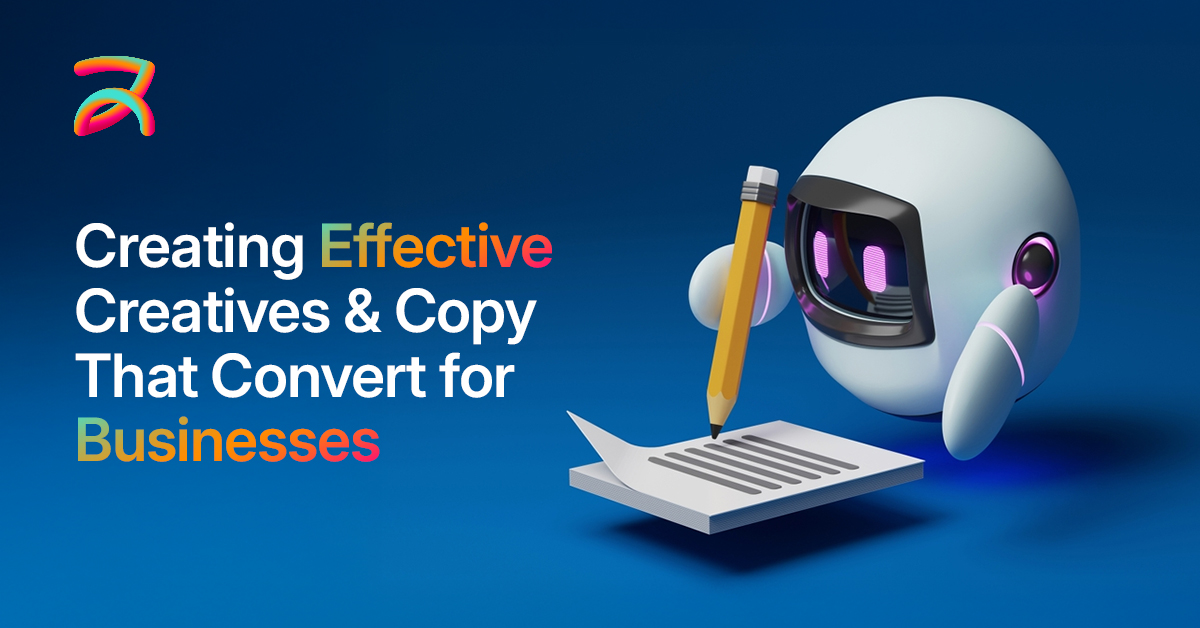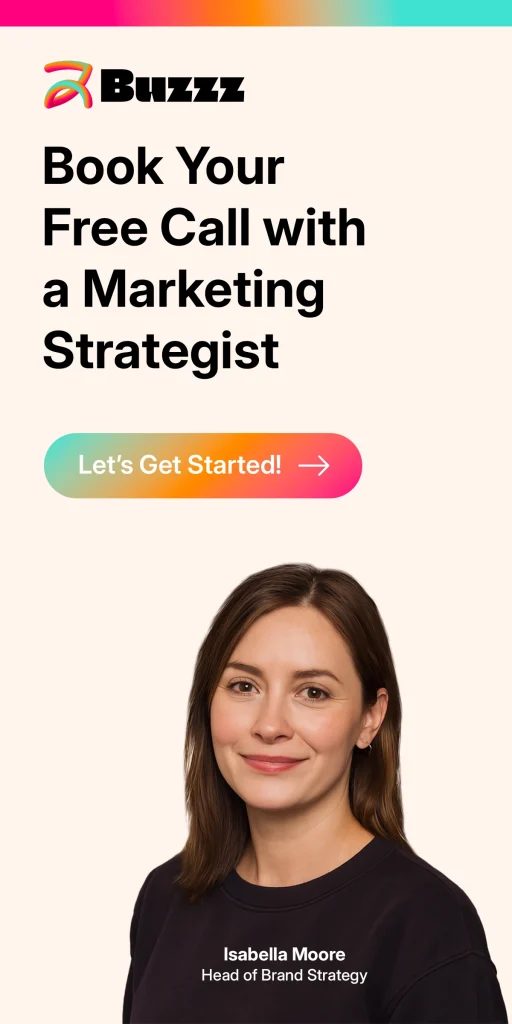If you’re looking to create ads that convert, you’ve come to the right place. The secret to successful LinkedIn Ads (or any ads, really) is effective creatives and compelling copy. When done right, they can turn casual browsers into loyal customers.
So, why do some ads work while others don’t? The answer is in how well your ad visuals and copy communicate the right message to the right audience at the right time. It’s not about just making something look pretty—it’s about grabbing attention, sparking interest, and leading potential customers toward taking action.
In this blog, we’ll show you how to create ad creatives and copy that actually convert, from crafting the perfect headline to using visuals that support your message.
Let’s dive in and make sure your ads are working as hard as they should be!

Understanding the Basics of High-Converting Creatives and Copy
To create ad creatives and copy that actually convert, it’s essential to understand the core principles that make them effective. It’s not just about getting your ads in front of people; it’s about getting them to engage, connect with your message, and take action.
Effective creatives and copy do more than catch the eye—they spark interest and nudge the audience toward the next step. Whether it’s clicking, signing up, or making a purchase, your goal should be to guide users along their journey in a seamless, natural way. Here are the basics to keep in mind:
What Makes an Ad Creative & Copy Effective?
The most effective ad creatives and copy have a few key elements in common:
- Visual Appeal and Relevance: Your creatives need to be eye-catching, but also relevant to your message. Use high-quality images or videos that directly relate to what you’re offering. A compelling visual grabs attention and encourages people to learn more.
- Clear Messaging and Value Proposition: Your ad copy should clearly explain what your product or service does and why it matters. Don’t leave your audience guessing. The more clear and straightforward your message, the more likely it is that your audience will resonate with it.
- Action-Driven Content: Always give your audience a reason to act. Use action verbs and focus on what they gain by clicking on your ad. Whether it’s “Get Started Now” or “Learn More,” your copy should push the audience toward taking that next step.
Importance of Understanding Your Audience
To create effective ad creatives and copy, you need to know exactly who you’re talking to. Tailoring your messaging to fit your audience is key to driving conversions. Here’s how to ensure your ads speak to the right people:
- Tailor Your Creatives and Copy Based on Customer Personas: Your creatives need to be eye-catching, but also relevant to your message. Use high-quality images or videos that directly relate to what you’re offering. A compelling visual grabs attention and encourages people to learn more.
- Use Audience Research to Align Messaging with Their Needs and Pain Points: Take time to research what your target audience values most. Are they looking for quality, speed, affordability, or something else? Once you understand their needs, shape your ad copy to directly address their pain points and offer the solution they’re seeking.
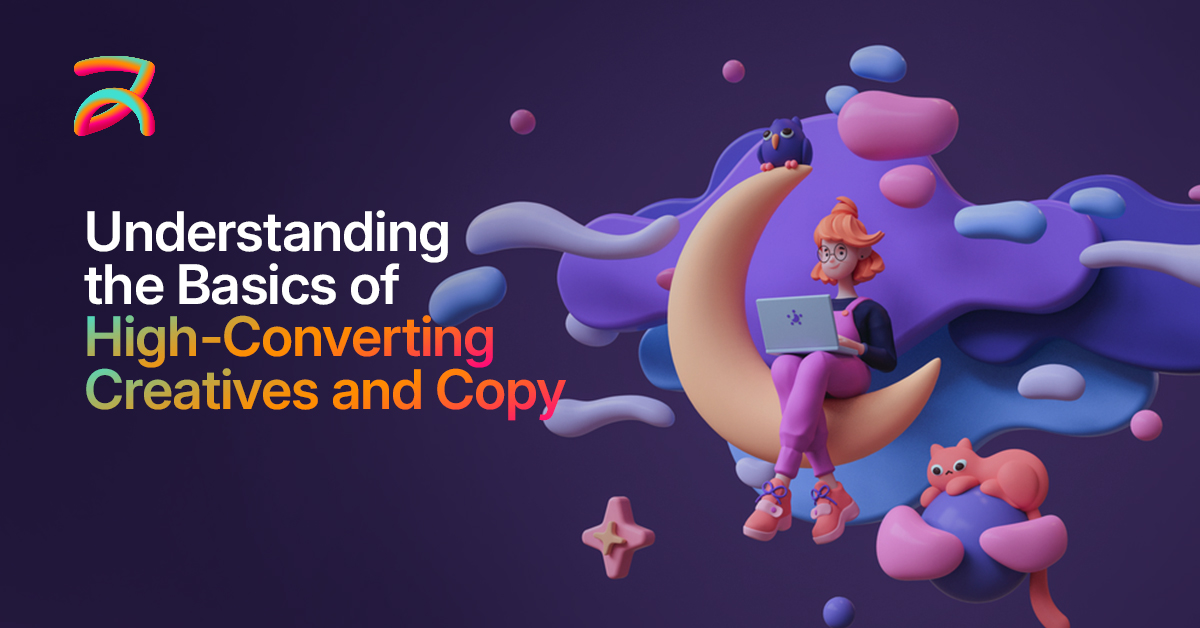
Writing Compelling Ad Copy That Converts
Creating great visuals is just one piece of the puzzle, your ad copy is what ultimately convinces your audience to take action. While visuals grab attention, it’s your copy that holds their interest and drives the conversion.
Effective ad copy isn’t just about writing well, it’s about crafting a message that speaks directly to your audience’s needs, wants, and pain points. You need to connect with them on a deeper level, addressing what matters most to them and showing how your product or service can solve their problems or improve their lives.
Here’s how to write ad copy that really grabs attention and drives conversions:
The Power of a Strong Headline
The headline is the first thing people see, so it needs to grab attention right away. A strong headline is the hook that makes people want to read more.
- How Headlines Grab Attention and Drive Clicks: Your headline should be clear, compelling, and direct. Make it relevant to what the audience is looking for and promise them something valuable. Headlines that spark curiosity or highlight a benefit often lead to more clicks.
- Benefit-Focused:: “Save Time and Money with Our All-in-One Tool”
- Curiosity-Based: “Want to Boost Your Business? Find Out How!”
- Urgency/Scarcity: “Last Chance to Grab 50% Off Your First Order”
A strong headline will draw people in, making them want to read the rest of the ad.
Crafting Clear and Engaging Body Copy
Once you’ve hooked your audience with a strong headline, the body copy is your chance to deliver the promise and persuade them to take action.
- Focusing on Benefits Over Features: It’s easy to get caught up in describing the features of your product, but benefits are what matter most to your audience. Focus on how your product or service will solve their problems or improve their life.
- Including Social Proof or Urgency to Prompt Action:: People trust recommendations from others. Including testimonials, reviews, or social proof can help build trust. Additionally, adding a sense of urgency (e.g., “Limited time offer†or “Only 5 spots leftâ€) encourages people to act quickly.
Creating a Call to Action (CTA) That Drives Action
A strong Call to Action (CTA) is what turns an interested reader into a click or conversion. Without a clear CTA, your audience might not know what to do next. Here’s how to craft an effective CTA:
- Best Practices for Writing CTAs That Convert: Use clear, action-oriented language. A good CTA tells the reader exactly what to do next—whether it’s signing up, making a purchase, or contacting you. For example: “Start Your Free Trial Today” or “Get Your Discount Now.”
- Examples of Strong CTAs That Inspire Users to Click:
- “Claim Your Free eBook”
- “Shop Now and Save 20%”
- “Book Your Free Consultation”
Your CTA should feel like the next natural step in the customer journey. Make it simple and compelling to maximize conversions.
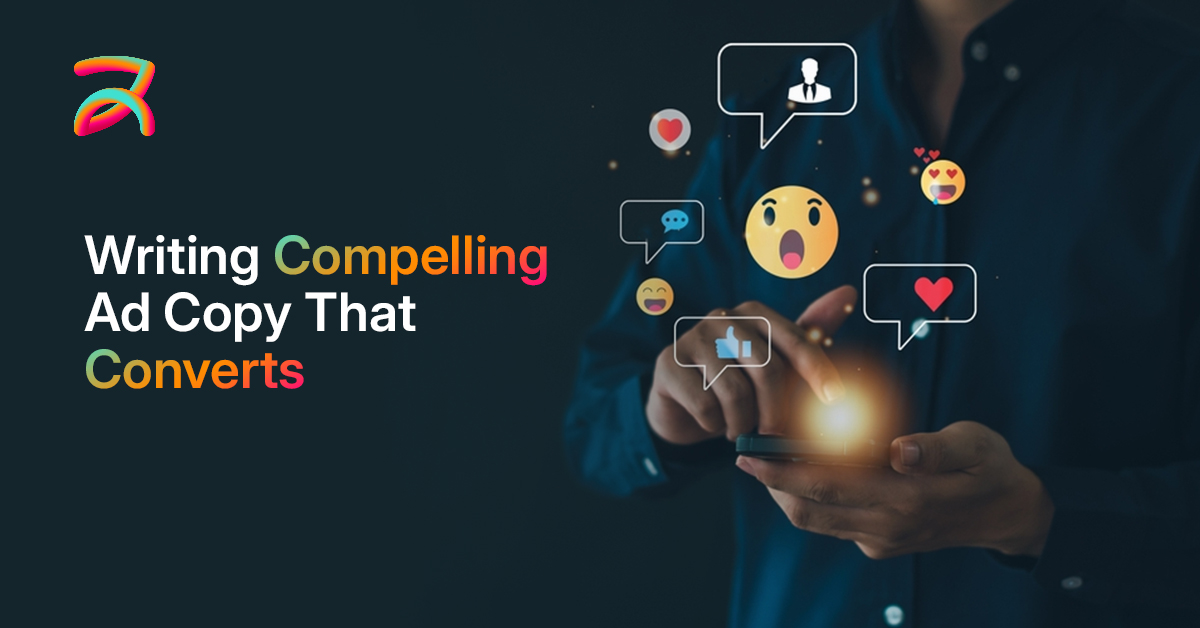
Designing Creatives That Capture Attention
Your ad creatives are the first thing people notice. If they don’t capture attention right away, they won’t get the chance to read your copy or take action. Great creatives are designed to grab interest and make people want to engage with your brand.
Here’s how to design creatives that stand out:
The Role of Visuals in Ad Performance
Visuals play a huge role in how your ads perform. People are naturally drawn to images, colors, and designs before they even read a word of your copy. The right visuals can significantly increase engagement and click-through rates. Here’s how to use visuals effectively:
- Impact of color, design, and imagery on engagement: Colors evoke emotions. For example, red can trigger urgency, while blue often conveys trust. Your design should be clean and not too cluttered. Too many elements can overwhelm viewers, while simple, eye-catching visuals keep them engaged.
- Choosing visuals that resonate with your audience: Make sure the visuals reflect your brand and resonate with the needs and desires of your target audience. For instance, if you’re marketing a fitness product, using images of people working out or feeling empowered will connect with your audience’s goals and emotions.
Ensuring Consistency with Your Brand
Consistency is key when it comes to your brand’s visual identity. Your ad creatives should always align with your overall brand image and feel like they belong in the same family as your other marketing materials. Here’s why:
- Aligning visuals with brand identity: Every visual element—color, font, imagery, should be in line with your brand’s style guide. This helps establish recognizability and trust with your audience.
- Creating a recognizable look across all ad creatives: Whether it’s an image, video, or carousel, make sure the look and feel of your ads are consistent. Over time, this builds familiarity, and your audience will start to recognize your brand even before they read your copy.
Ad Formats and Platforms
Different platforms require different types of creative formats. It’s important to choose the right one for each platform to make sure your ad performs its best.
- Choosing the right creative format based on platform: Platforms like Instagram, Facebook, and LinkedIn all have different formats. For instance, Instagram is known for its highly visual content, so you might use images or videos to grab attention. LinkedIn, on the other hand, might benefit more from carousel ads that show professional images or insights.
- How different platforms affect creative design: Each platform has its own dimensions and content guidelines. For example, LinkedIn may focus more on professional, polished designs, while Instagram ads often prioritize lifestyle-driven visuals. Understanding these differences can make a huge difference in the effectiveness of your ad.
A/B Testing and Continuous Improvement
A/B testing is one of the best ways to find out what works and what doesn’t. By testing different versions of your creatives and copy, you can continually improve your ad performance. Here’s how to approach testing:
- Importance of testing different creatives and copy versions: Experiment with different images, headlines, calls to action, and ad copy. For example, try testing two headlines or two different CTAs to see which one gets better results.
- Metrics to track for effective optimization: Keep an eye on key performance metrics like CTR, conversion rate, and CPC (cost per click). These metrics will give you insights into what needs tweaking and what’s working well.
Personalization and Dynamic Ads
Personalized ads can improve conversions by making the content feel more relevant to the viewer. LinkedIn offers tools like Dynamic Ads to create personalized experiences for users. Here’s how to leverage them:
- Using dynamic creatives to tailor ads to specific users: Dynamic ads allow you to automatically adjust the ad’s visuals and message based on the user’s profile. For example, you can display a product recommendation based on their past browsing history or actions.
- The benefits of personalization in improving conversions: When users see ads that feel personalized to their preferences, they’re more likely to engage. Personalization increases relevance, which leads to higher engagement and conversions.
Analyzing Data and Adjusting Strategies
Once your ads are running, it’s important to analyze performance and make adjustments where necessary. Don’t just set it and forget it!
- How to read performance metrics and make informed changes: Dynamic ads allow you to automatically adjust the ad’s visuals and message based on the user’s profile. For example, you can display a product recommendation based on their past browsing history or actions.
- Examples of how businesses have optimized ads based on data: When users see ads that feel personalized to their preferences, they’re more likely to engage. Personalization increases relevance, which leads to higher engagement and conversions.
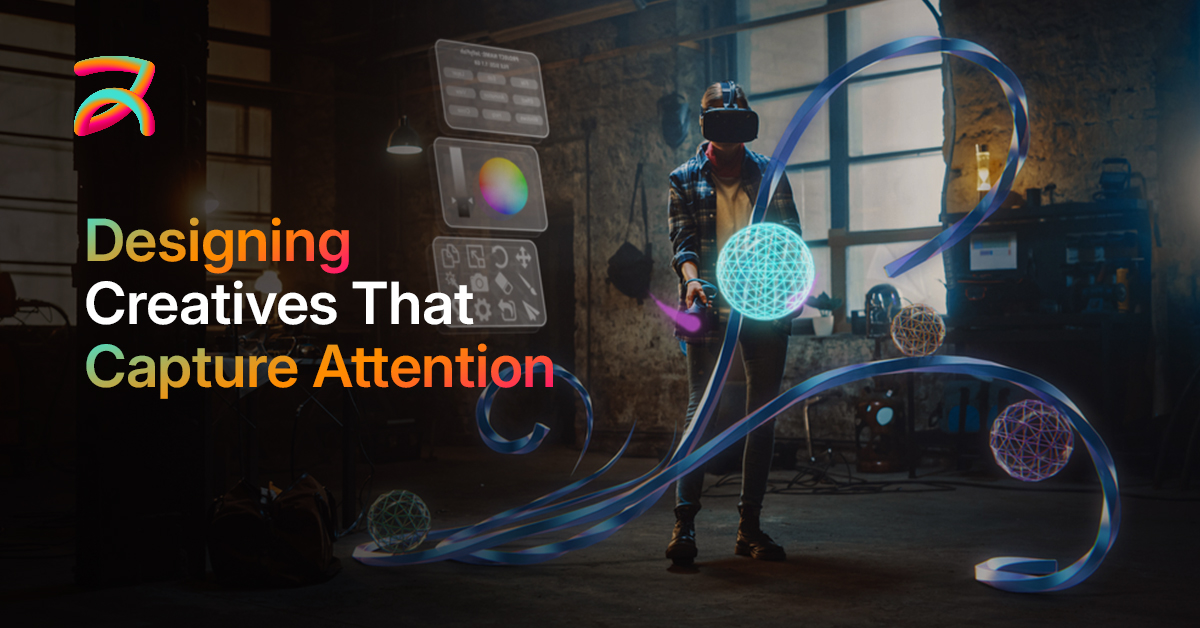
Optimizing Creatives and Copy for Conversions
Once you’ve created your ad creatives and copy, it’s time to make sure they’re optimized for conversions. Optimization isn’t a one-time task, it’s an ongoing process that ensures your ads are always performing at their best.
Here’s how to get the most out of your creatives and copy:
A/B Testing and Continuous Improvement
A/B testing is one of the best ways to find out what works and what doesn’t. By testing different versions of your creatives and copy, you can continually improve your ad performance. Here’s how to approach testing:
- Importance of testing different creatives and copy versions: Experiment with different images, headlines, calls to action, and ad copy. For example, try testing two headlines or two different CTAs to see which one gets better results
- Metrics to track for effective optimization: Keep an eye on key performance metrics like CTR, conversion rate, and CPC (cost per click). These metrics will give you insights into what needs tweaking and what’s working well.
Personalization and Dynamic Ads
Personalized ads can improve conversions by making the content feel more relevant to the viewer. LinkedIn offers tools like Dynamic Ads to create personalized experiences for users. Here’s how to leverage them:
- Using dynamic creatives to tailor ads to specific users: Dynamic ads allow you to automatically adjust the ad’s visuals and message based on the user’s profile. For example, you can display a product recommendation based on their past browsing history or actions.
- The benefits of personalization in improving conversions: When users see ads that feel personalized to their preferences, they’re more likely to engage. Personalization increases relevance, which leads to higher engagement and conversions.
Analyzing Data and Adjusting Strategies
Once your ads are running, it’s important to analyze performance and make adjustments where necessary. Don’t just set it and forget it!
- How to read performance metrics and make informed changes: Metrics like CTR, CPC, and ROAS (return on ad spend) will tell you how well your ads are doing. If a particular ad or audience isn’t performing well, it’s time to adjust your targeting, creatives, or copy.
- Examples of how businesses have optimized ads based on data: For example, a business may find that their image isn’t getting as many clicks as their video ad. Based on this data, they can shift resources towards the better-performing format or optimize the visuals to boost engagement.
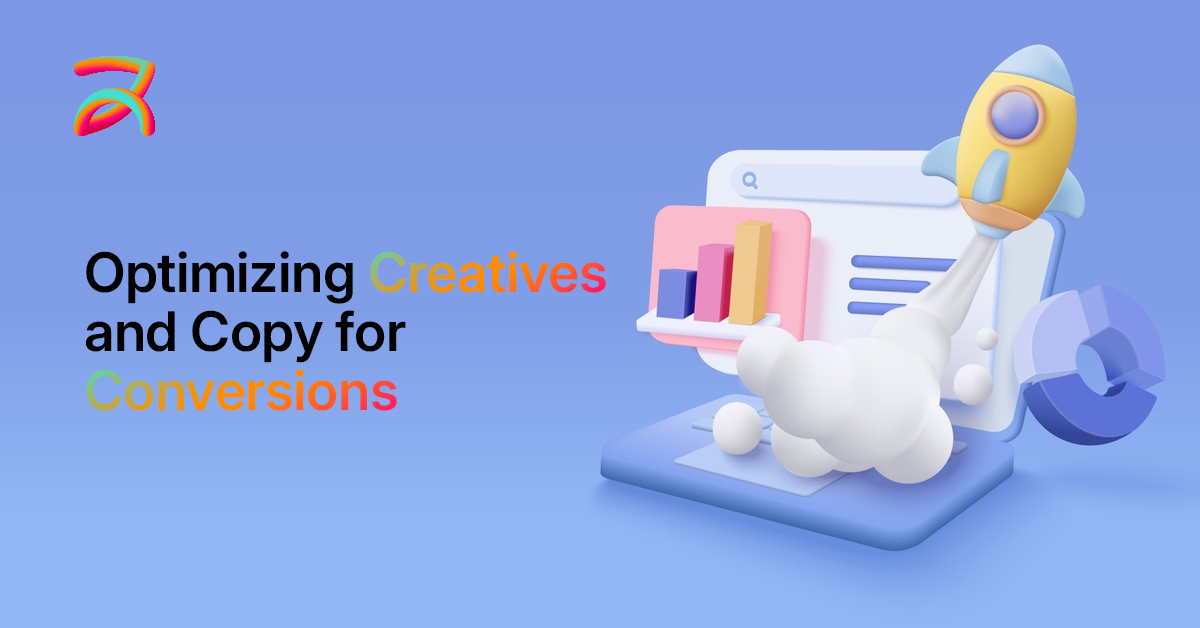
Best Practices and Common Mistakes to Avoid
Creating high-converting ad creatives and copy is an ongoing process, and while there are many best practices to follow, it’s also easy to make mistakes that could hurt your results.
Let’s take a look at some of the common mistakes to avoid and the best practices you should implement to ensure your ad creatives and copy perform at their best.
Common Mistakes in Ad Creatives and Copy
To get the most out of your ads, it’s important to avoid some common mistakes that can turn people away or reduce engagement:
- Overuse of Jargon: Too many technical terms or industry-specific jargon can confuse or alienate your audience. Keep your language simple and easy to understand.
- Weak CTAs: If your call-to-action is unclear or not compelling enough, people may not take the next step. A weak CTA like “Click Here” doesn’t give a strong incentive to act. Make it action-oriented, clear, and enticing.
- Lack of Visual Appeal: Your ad visuals should be eye-catching and relevant. If your design is cluttered or doesn’t resonate with your audience, it can be a turn-off. Make sure your visuals are clear, engaging, and aligned with your message.
Key Best Practices for Effective Ad Creatives and Copy
To make sure your ads are performing at their best, here are some best practices to follow:
- Consistency: Keep your brand’s visuals, tone, and message consistent across all your ads. This builds trust and makes your ads instantly recognizable.
- Testing: Always test different versions of your ads. A/B testing your creatives and copy allows you to find what resonates best with your audience and adjust for better results.
- Clarity: Your ad copy should be straightforward. Be clear about the value you’re offering and how it benefits the audience. Don’t leave room for confusion.
- Focus on Value: Highlight the benefits of your product or service, not just the features. Explain how your offering can solve your audience’s problems and improve their lives.

Conclusion
In conclusion, effective creatives and copy are essential for driving conversions and achieving successful advertising campaigns. The visuals you choose, the copy you write, and the call-to-action all play a crucial role in getting the audience to take the next step.
Start creating, testing, and optimizing your own ad creatives and copy today! Don’t be afraid to experiment and make adjustments based on what works.
By following best practices, avoiding common mistakes, and continuously improving, you can significantly boost your ad performance and ultimately drive better results for your business.


